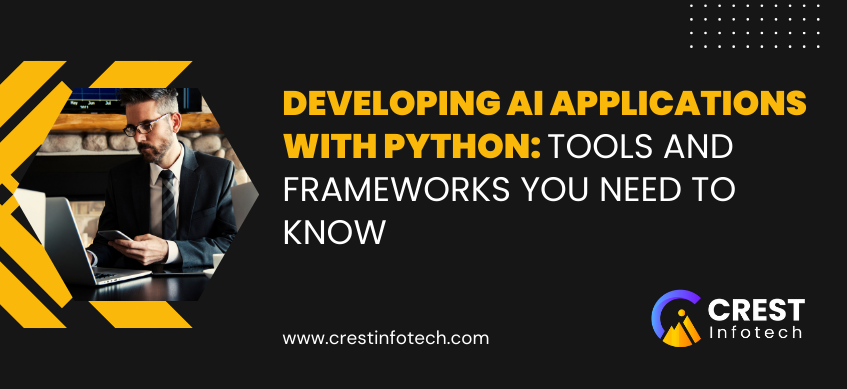Artificial Intelligence (AI) and Machine Learning (ML) have become integral to modern technology, revolutionizing industries from healthcare to finance. Python, with its simplicity and extensive libraries, has emerged as a go-to language for AI and ML development. This article explores the essential tools and frameworks for building AI applications with Python.
Why Python for AI and ML?
Python’s popularity in AI and ML stems from several advantages:
- Ease of Learning: Python’s simple syntax and readability make it accessible for beginners and professionals alike.
- Rich Ecosystem: Python offers a plethora of libraries and frameworks tailored for AI and ML tasks.
- Community Support: A vibrant community ensures abundant resources, tutorials, and support for developers.
Key Python Libraries for AI and ML
- NumPy
- A fundamental library for numerical computations.
- Provides support for multi-dimensional arrays and matrices.
- Essential for data preprocessing and mathematical operations.
- Pandas
- Facilitates data manipulation and analysis.
- Offers data structures like DataFrames, ideal for handling structured data.
- Matplotlib and Seaborn
- Visualization libraries for creating insightful charts and graphs.
- Enable exploratory data analysis through visual representation.
- Scikit-learn
- A comprehensive library for machine learning.
- Supports tasks like classification, regression, clustering, and dimensionality reduction.
- TensorFlow and Keras
- TensorFlow: A powerful framework for building and deploying deep learning models.
- Keras: A high-level API for TensorFlow, simplifying the creation of neural networks.
- PyTorch
- A flexible and dynamic deep learning framework.
- Preferred for research-oriented projects and rapid prototyping.
- NLTK and SpaCy
- Libraries for Natural Language Processing (NLP).
- NLTK is ideal for academic purposes, while SpaCy excels in production-grade NLP applications.
- OpenCV
- A computer vision library for image and video processing.
- Useful for tasks like object detection and facial recognition.
Frameworks for AI Application Development
- Django and Flask
- Web frameworks for deploying AI models as web applications.
- Django offers a robust structure, while Flask provides lightweight simplicity.
- FastAPI
- A modern framework for building APIs with Python.
- Ideal for serving AI models with high performance and minimal code.
- Streamlit
- A tool for creating interactive data science dashboards.
- Simplifies the process of visualizing and sharing AI models.
Tools for AI Workflow Optimization
- Jupyter Notebooks
- An interactive environment for writing and running Python code.
- Supports data visualization and documentation inline with code execution.
- Google Colab
- A cloud-based platform for running Python code.
- Provides free access to GPUs and TPUs for training AI models.
- Docker
- A containerization tool for deploying AI applications.
- Ensures consistent environments across development and production.
- MLflow
- A platform for managing the ML lifecycle.
- Facilitates experiment tracking, model deployment, and reproducibility.
Best Practices for AI Development with Python
- Start with Clear Objectives: Define the problem and expected outcomes before diving into coding.
- Data Preprocessing: Clean and preprocess data meticulously to ensure quality inputs.
- Choose the Right Model: Experiment with different algorithms and frameworks to find the best fit.
- Optimize Performance: Regularly tune hyperparameters and evaluate model performance.
- Document and Share: Use tools like Jupyter Notebooks and Streamlit to document and present your work effectively.
Conclusion
Developing AI applications with Python is a rewarding journey, thanks to its rich ecosystem of libraries and frameworks. By mastering tools like TensorFlow, PyTorch, and Scikit-learn, along with supportive environments like Jupyter Notebooks and Google Colab, developers can create impactful AI solutions. With Python as your ally, the possibilities in AI and ML are limitless.



